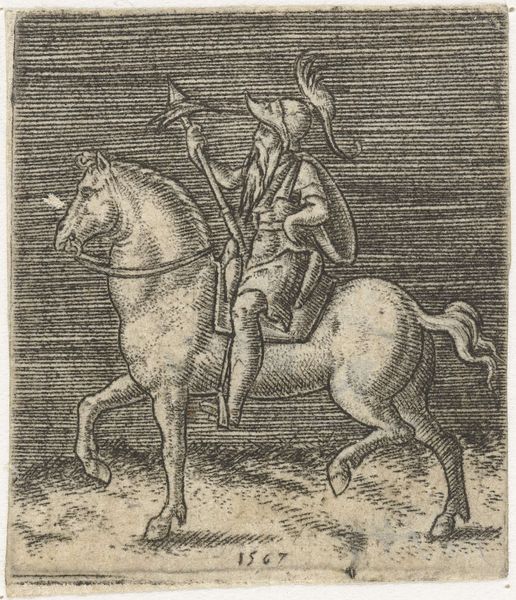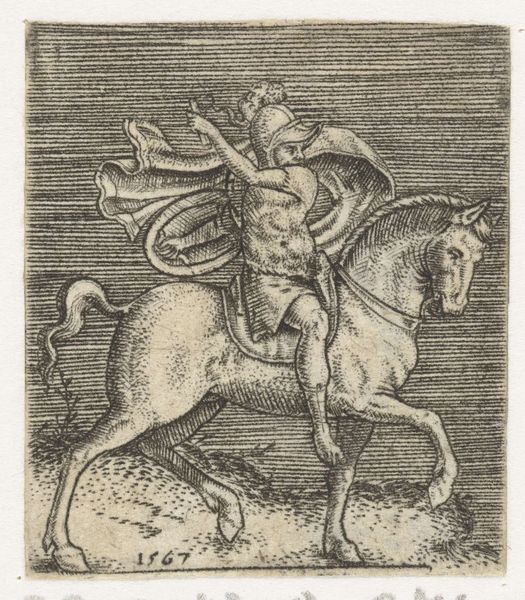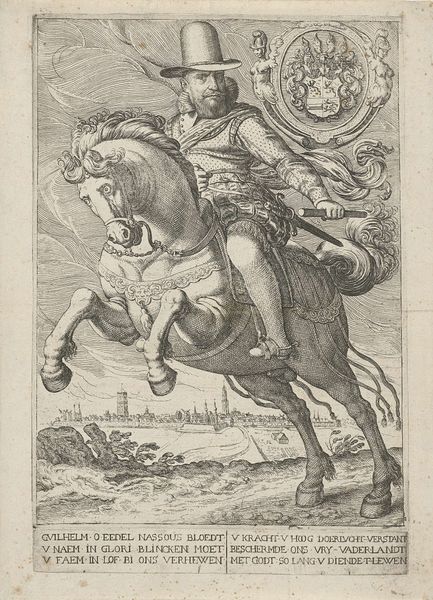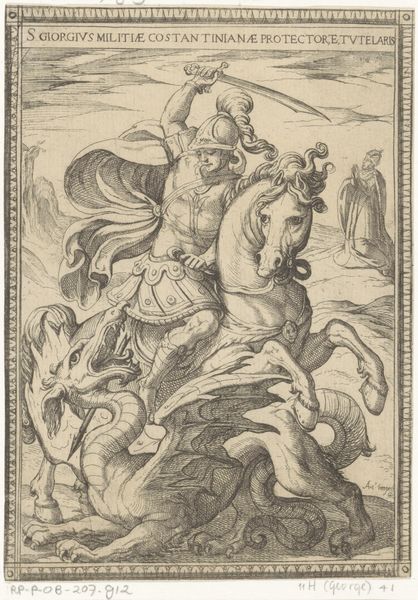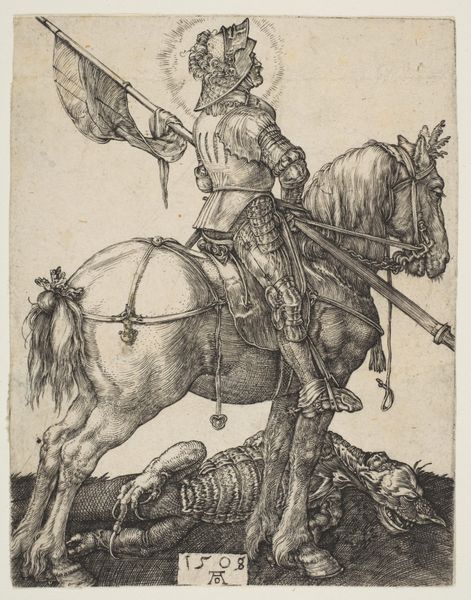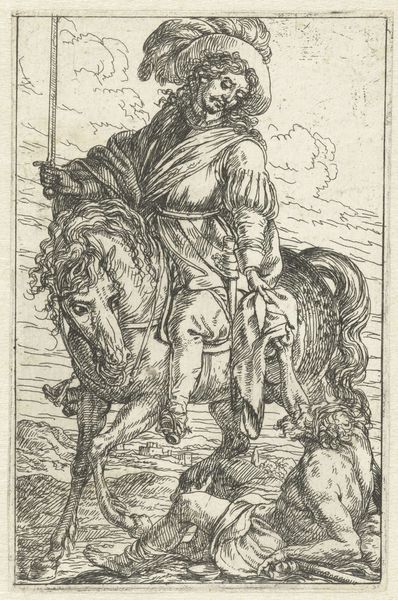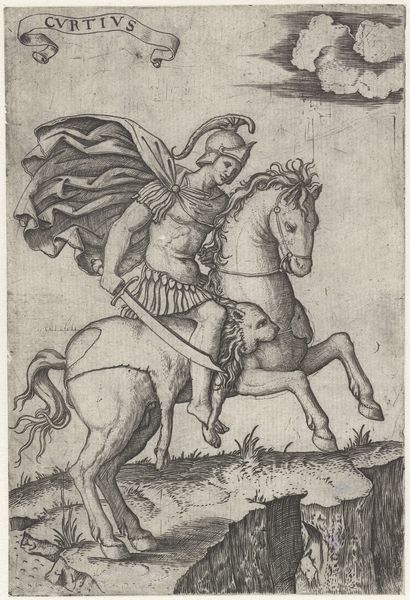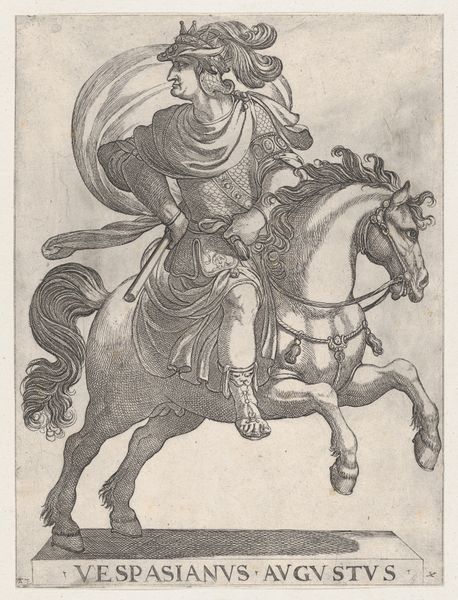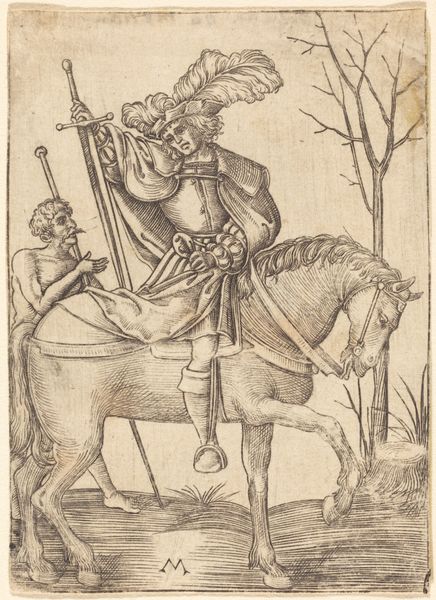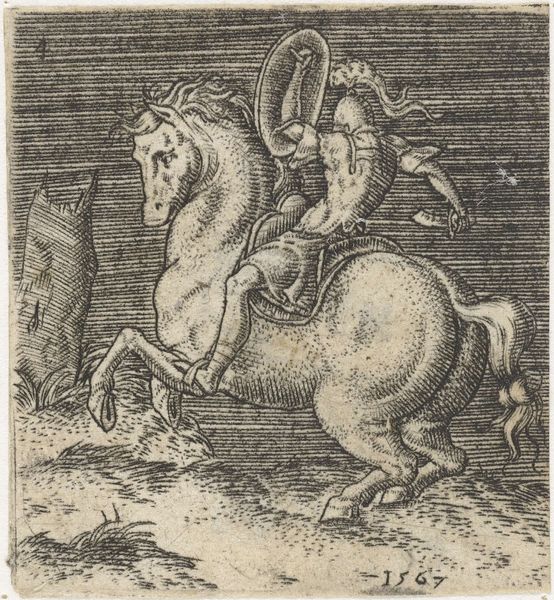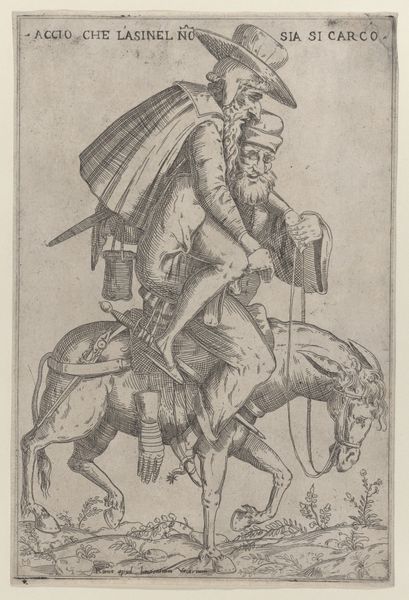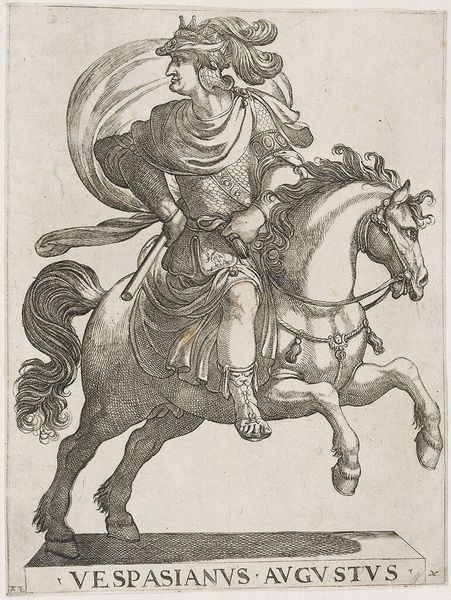
print, engraving
#
portrait
# print
#
pen illustration
#
pen sketch
#
landscape
#
figuration
#
history-painting
#
academic-art
#
engraving
Dimensions: width 31 mm, height 39 mm
Copyright: Rijks Museum: Open Domain
Curator: Alright, let's talk about this print: "Romeinse ruiter te paard," or "Roman Rider on Horseback," by Abraham de Bruyn, created in 1567. It's currently held in the Rijksmuseum. Editor: My first thought? It has this antique vibe, almost like an illustration from an old storybook. It’s a bit rough, maybe intentionally, which adds to its archaic charm. The figure seems self-important in the center of the composition, wielding some blunt-looking weapon. Curator: Precisely. De Bruyn was masterful with engraving, capturing fine detail in the horse's musculature and the rider’s elaborate armor, although slightly naively, don’t you think? It really showcases the style of academic art in that period. Consider also how his application of engraving, as a medium, informs the artwork’s themes of figuration and its role in history painting. Editor: "Naively?" Hmm, I wouldn't quite put it like that. More... earnest? Look at the landscape, too; it feels very stage-like, almost theatrical. Like the rider is the star of a performance and that suits the theme that’s present, that is, him being ready for war. Is that how we're reading this? Curator: Absolutely! The landscape serves as a backdrop to amplify the drama, using line work to indicate perspective and distance. It is true, that adds to the whole scene which feels artificially poised. The rider's figure, his armour, even his horse’s posture. Also note the interesting use of hatching, which could indicate areas of darkness or shadows—perhaps there is an implied underlying critique, despite its surface aesthetic appeal. Editor: Maybe the "naive" approach underscores the pomp and circumstance, highlighting the contrast between the idealized vision and the reality of the soldier. A Roman warrior—a classic image and figure, right? What were these historical riders really thinking as they were conquering these lands and leading troops on horseback? De Bruyn captures this warrior archetype here, yes? There are different possible readings depending on where the work hangs, literally, in space. Curator: I would tend to agree with your observations! What this historical painting manages to do is transcend the confines of conventional historical documentation and emerge as a powerful reflection of its socio-political environment. Editor: All told, there's so much to unpack within the borders of what at first seemed such a humble piece, that in the end, makes "Romeinse ruiter te paard," more multifaceted than meets the eye, that speaks to how artists have interpreted history, tradition, and ultimately humanity.
Comments
No comments
Be the first to comment and join the conversation on the ultimate creative platform.
